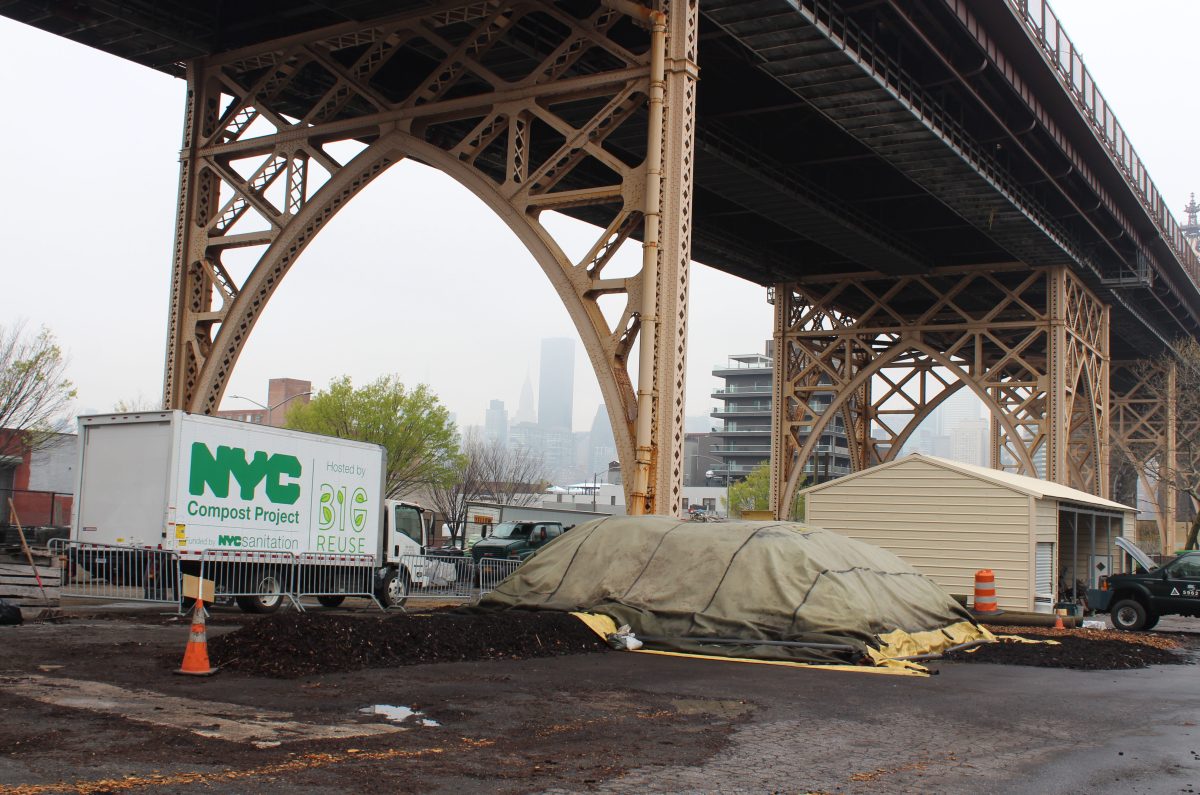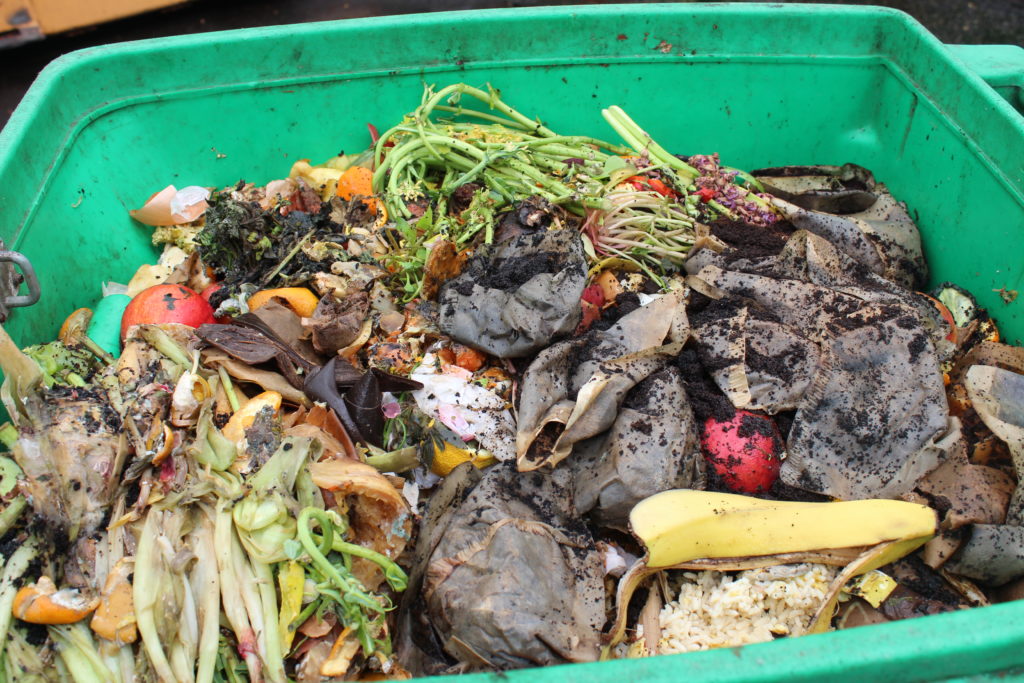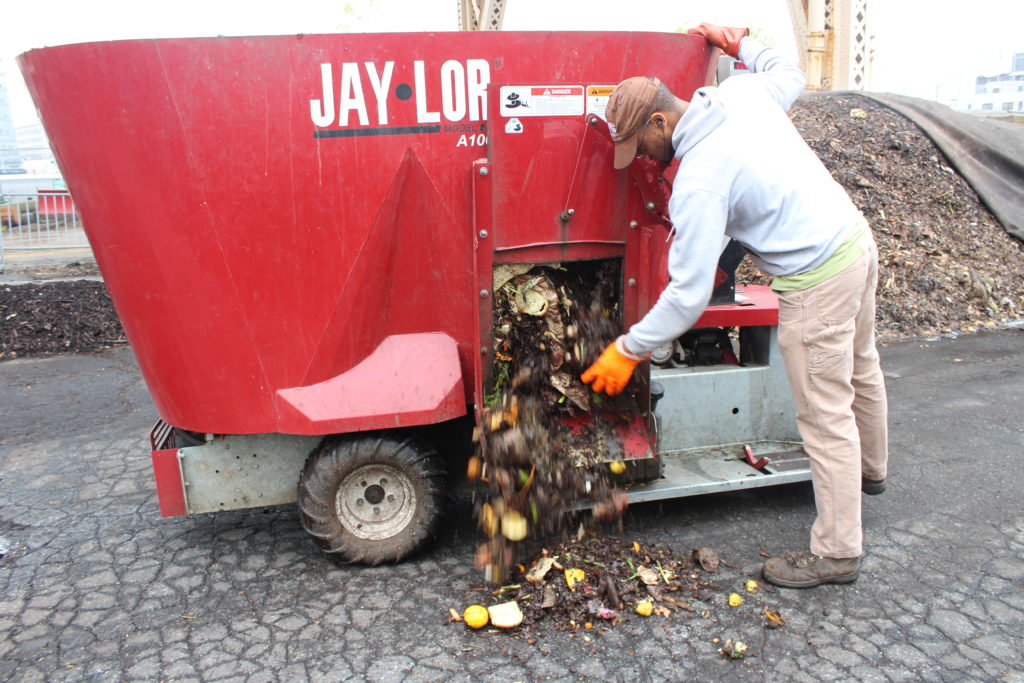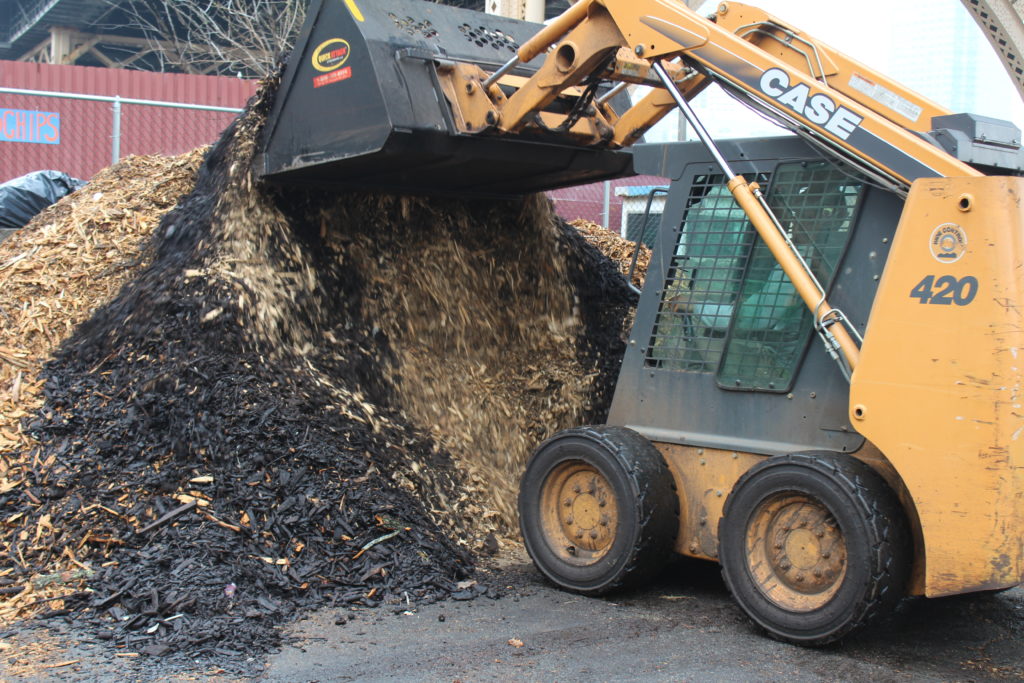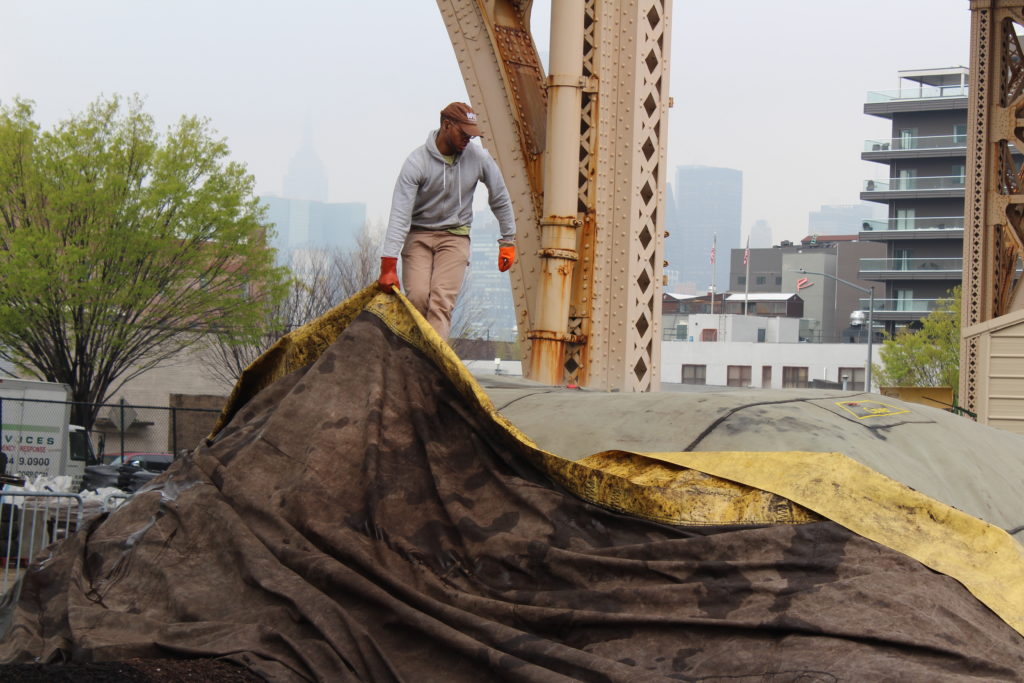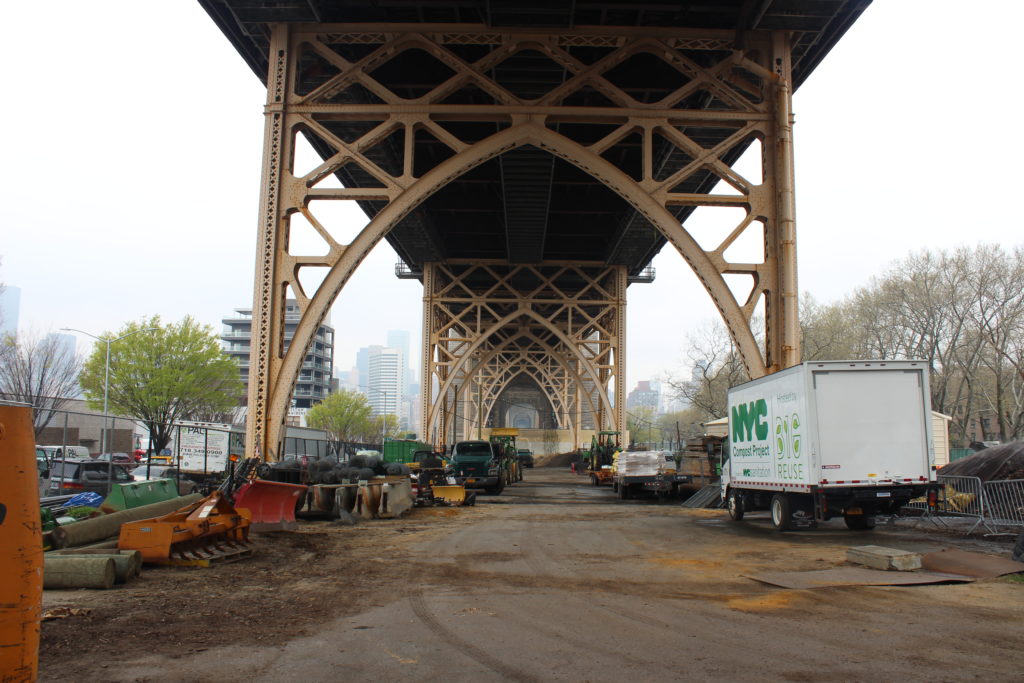Underneath the Queensboro Bridge in Long Island City, hundreds of thousands of pounds of food scraps collected by Queens residents undergo a transformation through a process called composting.
Though New York City has operated the NYC Compost Project since 1993, the Department of Sanitation (DSNY) has become more aggressive about convincing New Yorkers to compost.
According to Belinda Mager, the director of digital media and communications for DSNY, the city has a “multi-fold strategy” for diverting organics that began with workshops to teach people how to compost in their homes and community gardens.
In 2013, the city began rolling out the curbside collection program and handed out brown bins for food scraps to homeowners and in apartment buildings. Residents can also drop off their food scraps in subways, libraries and public places like Socrates Sculpture Park.
“We have this whole portfolio of initiatives and all of them are trying to meet New Yorkers where they’re at and getting them out of the landfill,” Mager said.
To reach more New Yorkers, the city partners with nonprofits who can help them with their composting initiative. In Queens, one of these organizations is Big Reuse, which began operating in the borough in 2005. In 2017, the organization processed 848,000 pounds of food scraps.
The nonprofit began leasing space underneath the Queensboro Bridge in 2013 and processes the food scraps dropped off at commuter stations and farmers markets. Big Reuse accepts most food scraps except dairy, meat and bones and also takes food soiled products and compostable plastic, according to operations coordinator Erik Hoversten.
For those in the organics collection program, the city accepts dairy, meat, bones and yard waste.
Louise Bruce, the former senior program manager for NYC Organics, compared the act of composting to creating a balanced meal.
“It’s thinking about how can I blend materials together like food waste and yard waste to achieve a perfect carbon and nitrogen blend?” she said.
In Long Island City, the recipe includes food scraps with wood chips delivered from Greenwood Cemetery, leaves delivered seasonally from city parks and wood shavings from local woodworkers, according to Hoversten.
Charles Lynch, the operations manager on site, mixes about 3,000 pounds of material in a food mixer and uses a plow to transport it. The perfect mixture contains two yards of food scraps, one yard of wood chips and one yard of leaves, he said.
This mixture is compiled into an “aerated static pile” where air is pumped through a perforated pipe on a cycle to “maintain a consistent oxygen level,” Hoversten said. A Gore Cover helps to control heat and moisture and maintains odor reduction. The mixture is then turned over multiple times to extend the decomposition process and then screen out any large items.
The entire process takes about five to six months and once compost is produced it is used in city parks and community gardens.
Community Board 2, which includes Long Island City, Sunnyside and Woodside, was enrolled in the curbside collection program in Oct. 2017.
All buildings of nine units or less were automatically enrolled and residents should have received small bins to store organics in their homes as well as a larger brown bin for building use.
Buildings with 10 or more units can submit a request to enroll on the DSNY website.
Composting food scraps is beneficial for a number of reasons, Bruce argues. Since the food waste is not collected in a regular trash bin and emanating odors, residents can take out the trash a little less often.
This process also allows buildings to cut off the food supply for rodents or other creatures.
“We have a staff person and her building enrolled in organics collection,” Bruce said. “They had a terrible skunk problem in Inwood and they couldn’t get the skunks to go away. They tried exterminators. [After enrolling in organics collection] the problem just completely ceased.”
Hoversten added that about 30 percent of trash in New York City is compostable so one of the main benefits of this program is diversion. By keeping this trash out of landfills, New Yorkers reduce space demand and also reduce the amount of greenhouses gases that are produced when this matter breaks down.
This “complex system of beneficial organisms” acts like a sponge and can retain water. The compost “holds on to water and releases it slowly over time” reducing the number of times you should water your plants, Bruce said. Compost can also hold on to harmful heavy metals so that they are not released into the soil and made available to plants, she added.
In 2016, Mayor Bill de Blasio announced his plan to contribute zero waste to landfills by 2030, which includes reducing commercial waste disposal by 90 percent and bringing organics collections to all city residents and public schools.
So far, about 3.3 million New Yorkers have access to curbside collection and by the end of this year all city residents will have curbside collection or have access to convenient neighborhood drop-off sites.
In Queens, Community Boards 2, 5, 7, 8, 9, 10, 11 and 14 have curbside collection and the city plans to expand to other boards this year.
“I think at first it’s a very daunting experience to think about taking something you normally throw in a bin and don’t have to think about and once you make that change keeping a system,” Bruce said. “There’s such an enormous amount of opportunity for diverting.”
For more information on organics or to find a drop-off site, visit the DSNY website.

